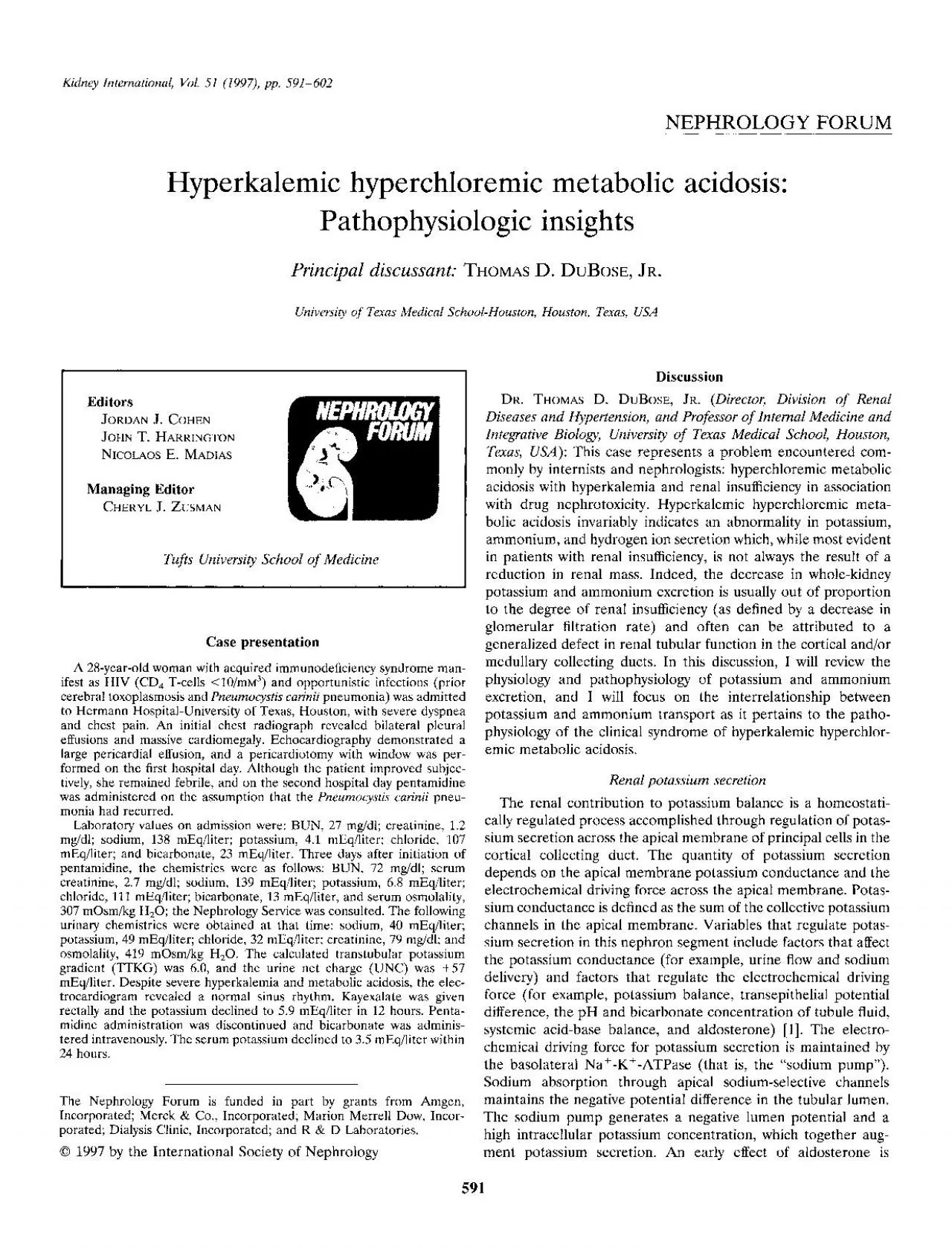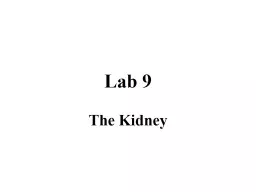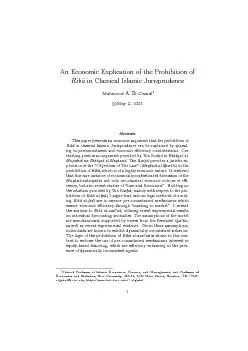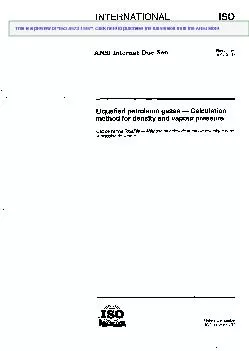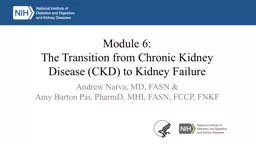PDF-Kidney International Vol 51 1997 pp 591602NEPHROLOGY FORUMHyper
Author : samantha | Published Date : 2022-10-27
592Nephrology Fonim Hyperkalemic hyperchloremic metabolic acidosisincreased activity of the apical sodiumselective channel withtime aldosterone also increases the
Presentation Embed Code
Download Presentation
Download Presentation The PPT/PDF document "Kidney International Vol 51 1997 pp 5916..." is the property of its rightful owner. Permission is granted to download and print the materials on this website for personal, non-commercial use only, and to display it on your personal computer provided you do not modify the materials and that you retain all copyright notices contained in the materials. By downloading content from our website, you accept the terms of this agreement.
Kidney International Vol 51 1997 pp 591602NEPHROLOGY FORUMHyper: Transcript
Download Rules Of Document
"Kidney International Vol 51 1997 pp 591602NEPHROLOGY FORUMHyper"The content belongs to its owner. You may download and print it for personal use, without modification, and keep all copyright notices. By downloading, you agree to these terms.
Related Documents

